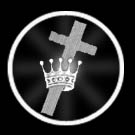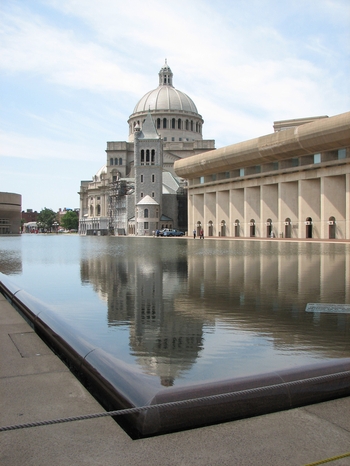Christian Science
History, Beliefs, Practices, Organization

Mary Baker Eddy, the founder of Christian Science was born on July 16, 1821, in Bow, New Hampshire. Her adolescence was marred with periods of serious illness. Traditional medicine provided no reprieve from her sicknesses, and in 1862 she turned to Dr. Phineas Quimby, a mental healer living in Maine. After she became his patient, her symptoms started to lessen and she quickly became one of his students. However, only two weeks after Quimby’s death in 1866, Eddy fell on an icy street, gravely injuring herself. Three days after her fall and reportedly close to death, she began reading Jesus’ accounts of healing in the Bible. Eventually, after studying these passages, she attests that her pain ceased and she left her bed, her health having returned. Following this experience, Eddy abandoned Quimby’s teachings in favor of her own Biblically-inspired spiritual healing. Christian Science was born.
Eddy began recording her beliefs and interpretation of biblical scriptures into a book, which in 1875 became her first book, Science and Health with Key to the Scriptures. The following year she formed the Christian Science Association in Massachusetts to unite all of her students. This association was followed in 1879 by the establishment of the Church of Christ, Scientist. Before her death in December of 1910, Eddy continued to solidify her church by writing fifteen more books and establishing a publishing house that currently produces several Christian Science publications.
The beliefs held by Eddy and her followers place Christian Science outside of the Protestant Christian mainstream. Christian Science draws its teachings from both the Old Testament and New Testament, with an important focus on the teachings of Jesus and the apostles. One of the foundational beliefs is that the material world is an illusion and only the spiritual world exists. According to Eddy, since God is perfect he did not create evil, death, and disease. The material world in which death and disease do exist, therefore, must be an illusion and the only true reality is a spiritual reality. The Scientific Statement of Being, recited in Sunday services, summarizes this doctrine:
There is no life, truth, intelligence, nor substance in matter.
All is infinite Mind and its infinite manifestation, for God is All-in-all.
Spirit is immortal truth; matter is mortal error.
Spirit is the real and eternal; matter is the unreal and temporal.
Spirit is God, and man is His image and likeness.
Therefore man is not material; he is spiritual. (Science and Health, p. 468)
Due to this disbelief in the material world Christian Scientists assert that disease is not real; God did not intend for his humanly creations to become ill. Therefore, through an understanding of the true spiritual relationship between God and humans, individuals can be healed of any physical illness without the aid of medicine. Healing is accomplished through prayer and faith. Some people choose to pray for themselves while others may consult a Christian Science Practitioner. Practitioners are consulted not only for health-related problems, but also for any career, relationship, or emotional issues that may be troubling a person. The Christian Science Journal lists all of the recognized practitioners.
 The Mother Church in Boston serves as the international headquarters for Christian Science. A five member Board of Directors governs the decisions affecting the Mother Church. Each member holds office for an unspecified period and appoints his/her own replacement. Branch churches number approximately 1,600 in the United States, 60 in Canada, and another 540 across the globe. Each branch church is a democratic, self-governing unit. The only influence the Mother Church exerts over the branch churches is the weekly Lesson-Sermon. This is the Sermon read weekly in the branch churches, which consists of Bible scripture and correlating Science and Health passages. There are 26 established topics for the Lesson-Sermon, chosen by Eddy, which provide the theme of the service. These topics repeat themselves, so that there is a topic every single week. Some examples include God as the Only Cause and Creator, Love, and the Doctrine of Atonement. The Lesson-Sermon is prepared by a committee in Boston and dispatched to each branch church. During the Sunday service two Readers, selected from and elected by the congregation, read the passages for the Lesson-Sermon. First Reader, usually the most revered person in the church, reads from Science and Health, while the Second Reader reads from the Bible. No official membership numbers are published by the church; however, estimates of church membership range from 150,000 to 300,000 members.
The Mother Church in Boston serves as the international headquarters for Christian Science. A five member Board of Directors governs the decisions affecting the Mother Church. Each member holds office for an unspecified period and appoints his/her own replacement. Branch churches number approximately 1,600 in the United States, 60 in Canada, and another 540 across the globe. Each branch church is a democratic, self-governing unit. The only influence the Mother Church exerts over the branch churches is the weekly Lesson-Sermon. This is the Sermon read weekly in the branch churches, which consists of Bible scripture and correlating Science and Health passages. There are 26 established topics for the Lesson-Sermon, chosen by Eddy, which provide the theme of the service. These topics repeat themselves, so that there is a topic every single week. Some examples include God as the Only Cause and Creator, Love, and the Doctrine of Atonement. The Lesson-Sermon is prepared by a committee in Boston and dispatched to each branch church. During the Sunday service two Readers, selected from and elected by the congregation, read the passages for the Lesson-Sermon. First Reader, usually the most revered person in the church, reads from Science and Health, while the Second Reader reads from the Bible. No official membership numbers are published by the church; however, estimates of church membership range from 150,000 to 300,000 members.
History in Virginia and Richmond
Christian Science arrived in Virginia not long after the Mother Church was established in Boston. Undoubtedly the northern Virginia area surrounding DC was one of the first places Christian Science entered the state. Many of those early believers probably attended services in the old churches in DC. Perhaps one of the first places in Virginia to establish a church was Richmond. The beginnings of the First Church of Christ, Scientist occurred in Richmond in 1899 when adherents began meeting together in homes for services. The Christian Scientists were able to withstand some local adversity to the beliefs and even the threat of a law forbidding its practice. The first Richmond service held in an actual church occurred in June 1907 at the First Church of Christ, Scientist’s original building on Meadow Street. By April, 1937 a larger church had been built on Monument Avenue to house the growing congregation of the First Church of Christ, Scientist. Eventually even more space was needed and a second congregation was established. This new church, the Second Church of Christ, Scientist, began meeting in 1978 on River Road.
Profile prepared by Emily Stevenson
May, 2006